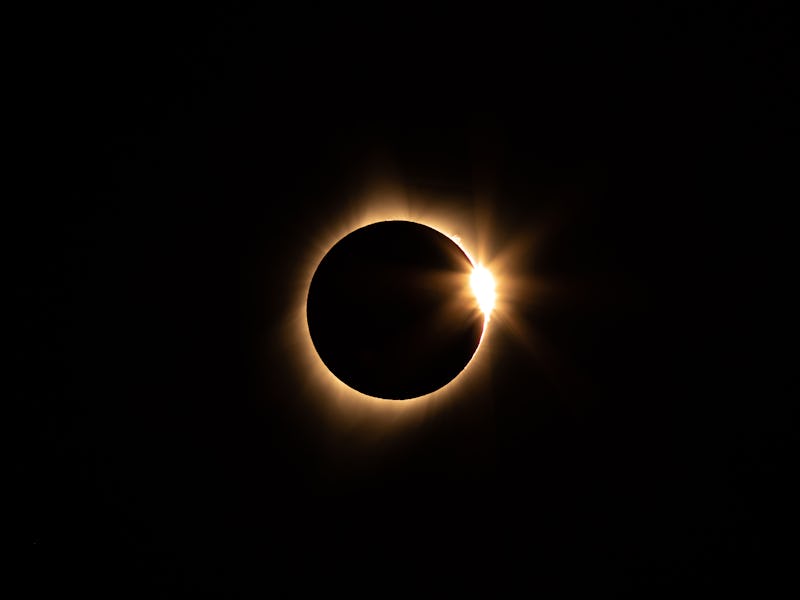You need to watch the "ring of fire" annular solar eclipse
The Moon will get between us and the Sun next week, creating a fiery halo.

The Sun and the moon are meeting together in our earthly view of the skies on June 10, creating a fiery ring that will outline their celestial rendezvous.
But don’t expect total darkness: it’s an annular eclipse, meaning that the Moon will only be covering part of the Sun, with its outer borders still visible. That partial visibility creates a “Ring of Fire.”
In order to prepare you for the first solar eclipse of the year, Inverse breaks down how you can watch it, when to see it, and all the tools you need for your sunny viewing.
The annular solar eclipse will shine as a bright, fiery halo in the skies.
What is an annular solar eclipse?
Total solar eclipses occur when the Moon completely covers the Sun, fully obscuring the star from our view on Earth.
But an annular solar eclipse takes place when the Moon’s orbit is too far to fully cover up the Sun. During an annular eclipse, the Moon covers most of the Sun but a fiery ring still appears in the background.
Earth travels in an elliptical orbit around the Sun, and the Moon travels in an elliptical orbit around Earth. As a result, the distance between these three celestial bodies changes.
During the annular eclipse, the Sun is at its nearest point to Earth, while the Moon is at its greatest distance away from Earth, so it is not large enough to cover up the entirety of the Sun from our view from Earth.
When is the annular solar eclipse?
The annular solar eclipse will take place on Thursday, June 10, and the exact times are dependent on your location. The eclipse will begin at sunrise for many in North America and last a little less than an hour.
The first people to see the eclipse will be in Ontario, Canada, and then the eclipse will sweep its way around the northern side of the Earth. The eclipse will end around sundown over northeastern Siberia.
Who will see the solar eclipse?
There are two main components to the eclipse: the annular, and the partial. The annular eclipse will see the Moon entirely passing in front of the Sun, while partial observers will only see parts of the moon take over.
Observers in parts of Canada, Greenland, and Siberia will see the annular eclipse, while large portions of the rest of the world can see the partial phase.
In the United States, the partial eclipse will be visible from the northern Midwest, and the East Coast except Florida. It will also be visible across most of Canada except the far west and most of Europe.
A visibility map of the eclipse, with orange indicating the annular portion and the rest indicating the degree of visibility.
How to watch the annular solar eclipse?
As with any solar eclipse, it is necessary to wear protective eyewear to protect your eyes from the Sun. Solar radiation can permanently damage your eyes, hurting your sight or causing permanent blind spots in your vision.
In order to be able to stare freely at the eclipse, you need special eclipse glasses. Fortunately, eclipse glasses are available online. The American Astronomical Society has a guide to reputable manufacturers. Be careful not to buy just any glasses — staring at the Sun with improper eyewear can damage your eyes.
Eclipse glasses are reusable, so long as they don’t have any major cracks or scratches.
Be sure to protect your retinas when looking at the burning ring of fire.
If you’re using a telescope or a pair of binoculars to look at the eclipse, it is also necessary to put a solar filter on the lens in order to prevent damage to your eyes.
There’s also an option where you can view the annular solar eclipse without leaving your house. Time and Date will broadcast the eclipse live on its website.